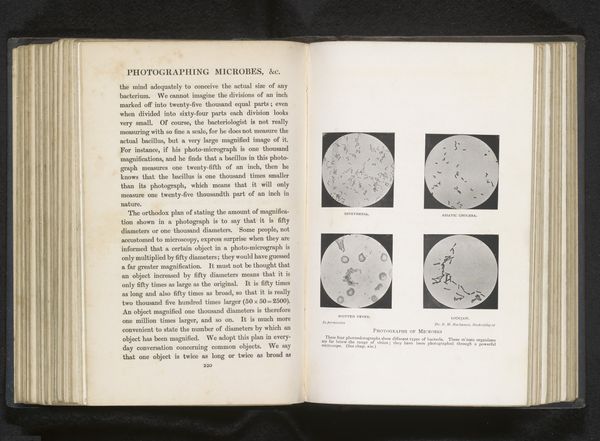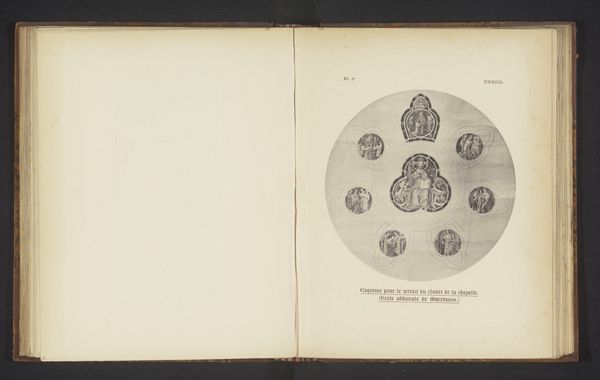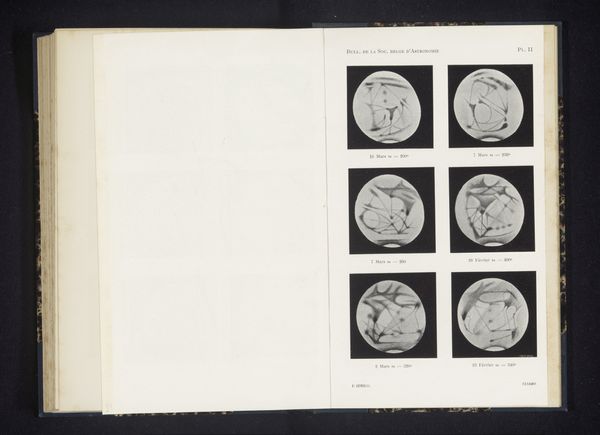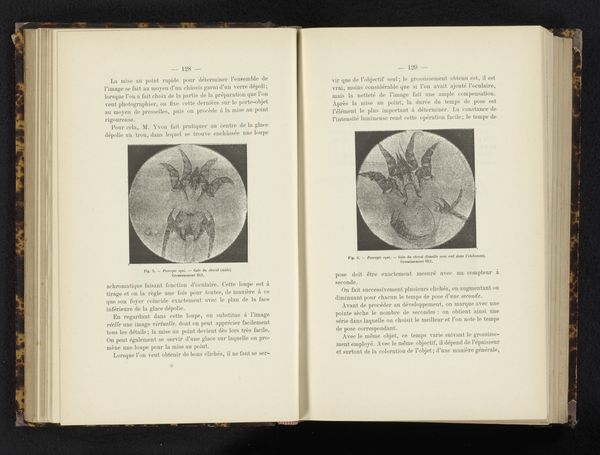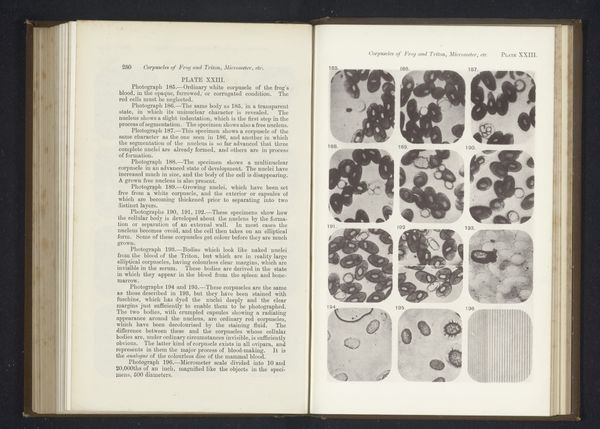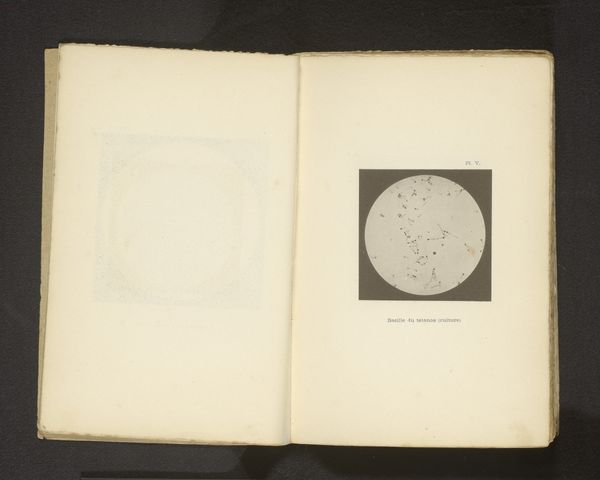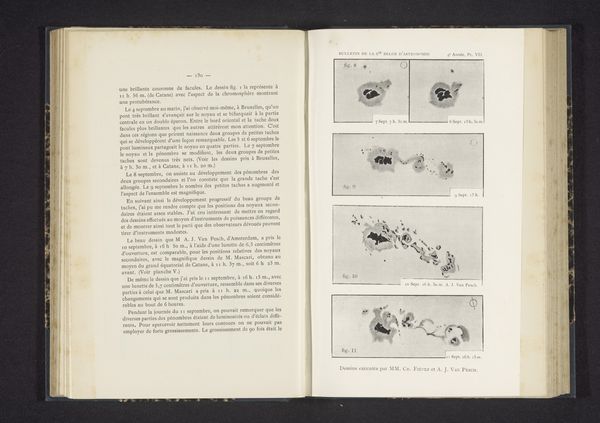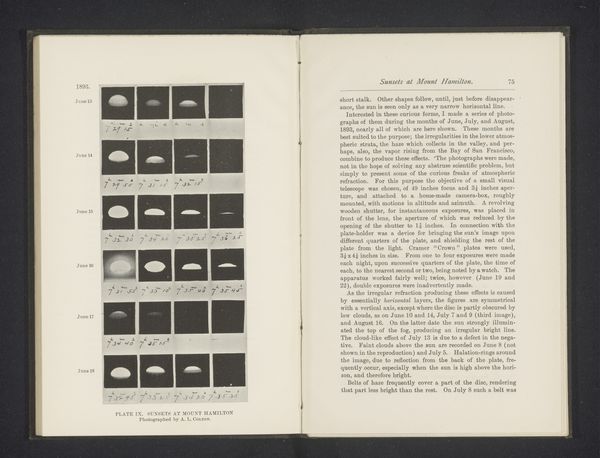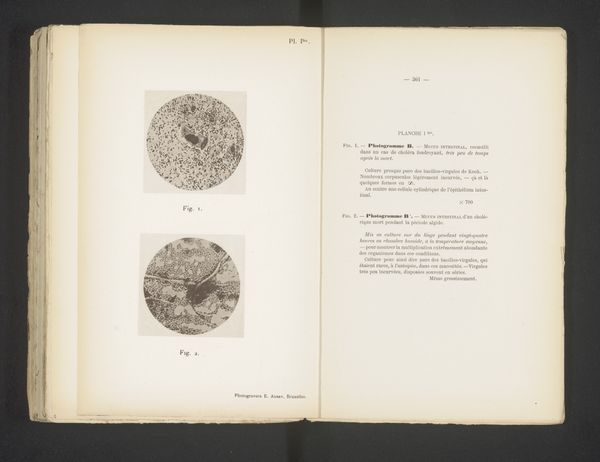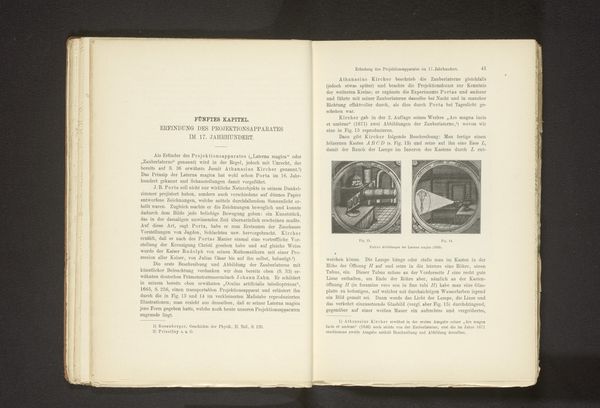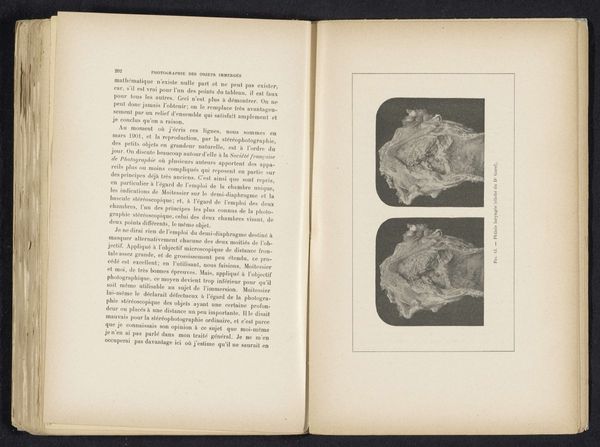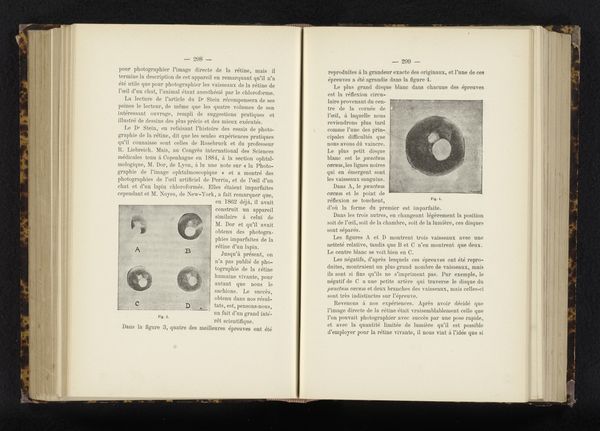
print, photography
# print
#
book
#
photography
#
academic-art
Dimensions: height 186 mm, width 118 mm
Copyright: Rijks Museum: Open Domain
Curator: Before us we have "Six Views of the Canals of Mars," predating 1899, attributed to Vincenzo Cerulli. It's reproduced in print, seemingly from a photographic source, within what appears to be a scientific book or journal. What is your first take on this depiction of Mars? Editor: An austere and perhaps somewhat quixotic ambition marks this page. Each globe floats in the inky black, connected by faint networks. You can almost feel Cerulli hunched over his telescope, battling the imperfections of the lens, the limitations of the photographic print process. What drove him to create these visualizations? Curator: Well, the image taps into a fascination with mapping the unknown, which goes back centuries. Canals, of course, implied intelligent life, which deeply resonated with a Victorian era obsessed with progress and civilization extending its reach, even to other planets. The canals became symbolic projections of earthly ambitions. Editor: The academic rendering underscores that desire for precision. Cerulli used the print medium, making it more portable. He wasn't interested in Mars’ material reality per se, but the labor he undertook involved craft, using photography to capture the light, and then print to multiply the possibilities to reach his colleagues. Curator: And within the depicted "canals," we see patterns mirroring human design. Those shapes, while ostensibly objective scientific observations, were ultimately colored by pre-existing notions of order and meaning. We see the archetypes we expected to find. Editor: Absolutely. There's a tension inherent in the use of photography; it ostensibly offers unmediated access, yet, that scientific veneer quickly dissipates under scrutiny. Cerulli's drawings aren’t simply capturing light; he also intervened in material ways through retouching. Curator: It demonstrates that we often find what we’re seeking; those Martian canals fulfilled the Victorian-era need to locate our human qualities elsewhere in the cosmos. These lines became meaningful because society already had invested canals and routes with powerful cultural import. Editor: Yes, thinking about this print made me think more about the book and its function as an object of scientific exchange and inquiry in its period. The making of "Six Views on the Canals of Mars" reminds me about the complex social construction of “objective” observations and processes. Curator: Likewise, this exploration reinforced how symbols in scientific, technological, and historical records acquire considerable weight over time. Visual records always transmit both expected and unintended impressions. Editor: Indeed. This brings renewed respect for art’s function in recording ways of thinking while always embodying a material encounter of its own.
Comments
No comments
Be the first to comment and join the conversation on the ultimate creative platform.


